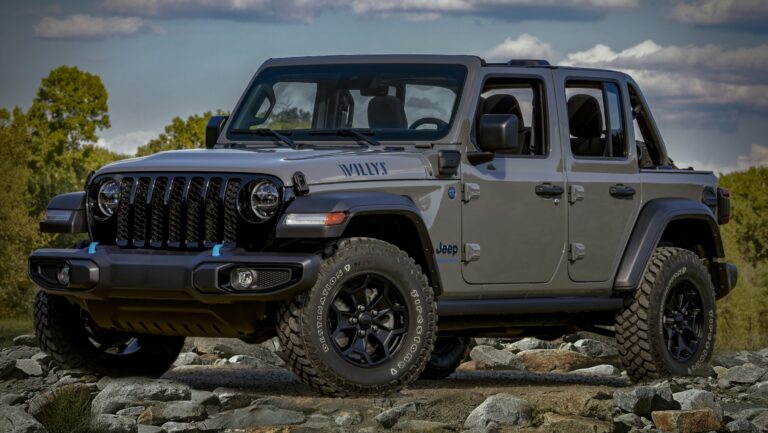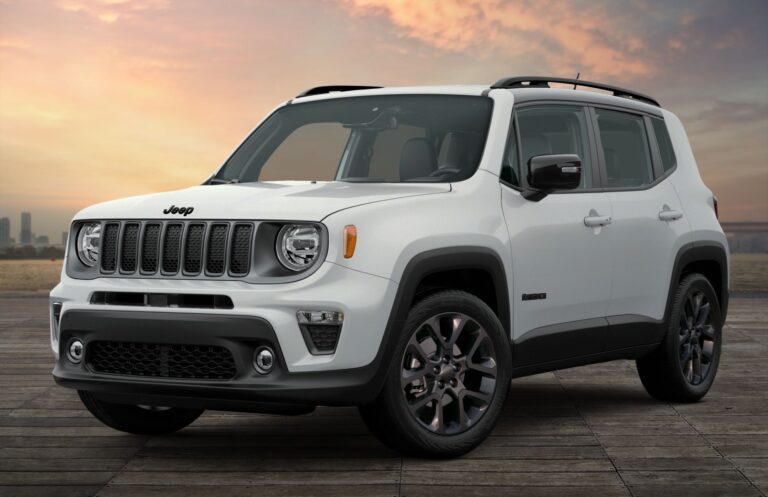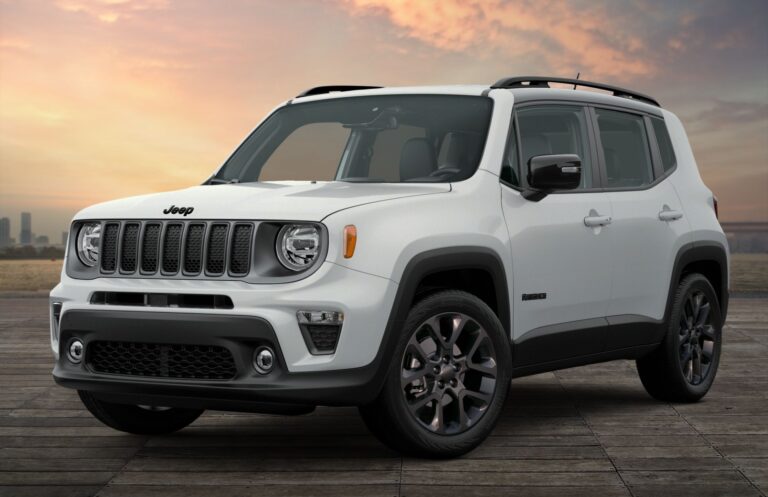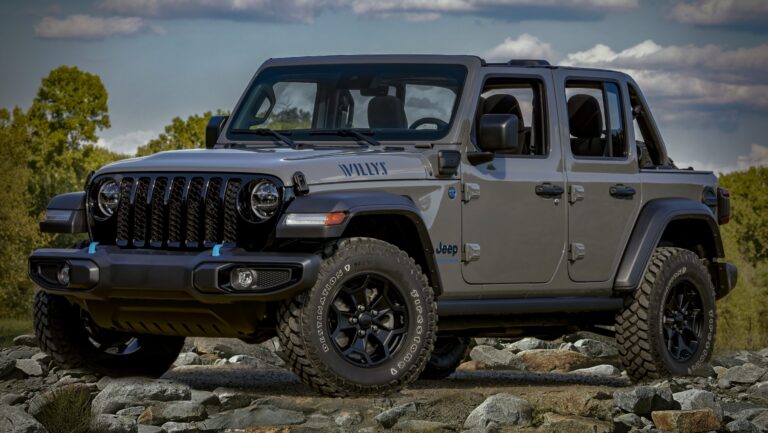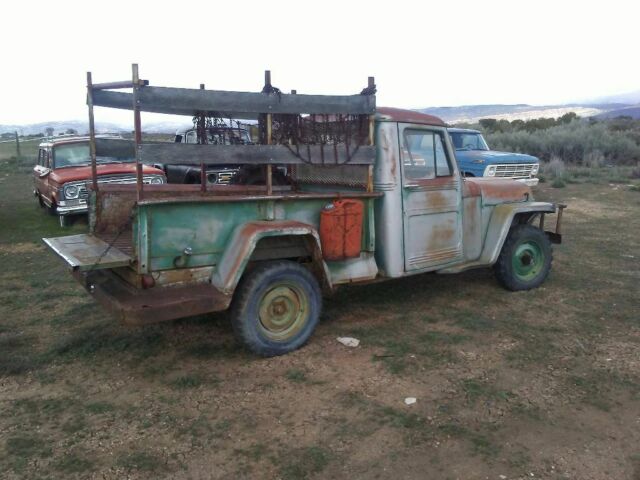Old Willys Jeep For Sale: Your Ultimate Guide to Owning a Piece of History
Old Willys Jeep For Sale: Your Ultimate Guide to Owning a Piece of History jeeps.truckstrend.com
The rumble of a flathead engine, the iconic seven-slot grille, and a silhouette instantly recognizable across generations – the Old Willys Jeep is more than just a vehicle; it’s a living legend. From its humble beginnings on the battlefields of World War II to its post-war transformation into the beloved civilian workhorse, the Willys Jeep has cemented its place in automotive history. For enthusiasts, collectors, and those seeking a unique driving experience, the prospect of finding an "Old Willys Jeep For Sale" isn’t just a transaction; it’s an embarkation on a journey into mechanical heritage and timeless adventure.
This comprehensive guide is designed to equip you with the knowledge, insights, and practical advice needed to navigate the exciting world of buying an Old Willys Jeep. Whether you’re dreaming of a meticulous restoration project, a rugged off-road companion, or simply a nostalgic weekend cruiser, understanding what to look for and how to approach the purchase is paramount.
Old Willys Jeep For Sale: Your Ultimate Guide to Owning a Piece of History
The Enduring Legacy: A Brief History of the Willys Jeep
The story of the Willys Jeep begins in 1940, when the U.S. military sought a lightweight, rugged, four-wheel-drive reconnaissance vehicle. Willys-Overland won the primary contract, producing the legendary Willys MB. This utilitarian marvel played a pivotal role in Allied victory, earning the moniker "the vehicle that won the war."
After the war, Willys-Overland wisely recognized the civilian potential of their robust creation. They introduced the CJ (Civilian Jeep) series, starting with the CJ-2A in 1945, marketed as an "Agri-Jeep" for farmers and workers. This was followed by the CJ-3A, the CJ-3B (known for its taller "high-hood" to accommodate a new engine), and later the CJ-5, which carried the torch of the Willys design well into the AMC era. Beyond the CJs, Willys also produced station wagons, trucks, and even sedans, all bearing the distinctive Willys name and reputation for durability. Today, these early civilian models, alongside their military brethren, are highly sought after by a passionate community.
Why Buy an Old Willys Jeep? More Than Just a Vehicle
The allure of an Old Willys Jeep extends far beyond its utilitarian design. For many, it’s a statement, a hobby, and a connection to a bygone era.
- A Piece of History: Owning a Willys Jeep is owning a tangible piece of military and automotive history. Each dent and patina tells a story, connecting you to the millions who relied on these vehicles.
- Unique Driving Experience: Forget power steering, air conditioning, or complex electronics. Driving an old Willys is a raw, visceral experience. You feel the road, hear the engine, and connect with the machine in a way modern vehicles simply don’t allow.
- Restoration Project Potential: For the mechanically inclined, a Willys Jeep offers an incredibly rewarding restoration project. Parts are relatively available, and the mechanical simplicity makes them approachable for home mechanics.
- Unmatched Off-Road Capability: Even in their original form, Willys Jeeps were designed for challenging terrain. Their short wheelbase, high ground clearance, and robust 4×4 system make them surprisingly capable off-roaders, even by today’s standards.
- Community and Camaraderie: The Willys Jeep community is vibrant and welcoming. Owners often share knowledge, parts, and stories, fostering a strong sense of camaraderie.
- Investment Potential: Well-maintained or professionally restored Willys Jeeps, particularly rare military models or early CJs, tend to hold or even appreciate in value over time.

Types and Models of Old Willys Jeeps for Sale
When searching for an Old Willys Jeep, you’ll encounter several key models, each with its own characteristics and historical significance:
- Willys MB / Ford GPW (1941-1945): The iconic military "Jeep." Identical in appearance, these are highly collectible due to their historical significance. Look for original military features, specific markings, and period-correct components.
- Willys CJ-2A (1945-1949): The first civilian Jeep, often called the "Agri-Jeep." Characterized by its external tailgate, seven-slot grille, and "Willys" embossed on the hood side. A workhorse designed for farms and light industry.
- Willys CJ-3A (1949-1953): An evolution of the CJ-2A, featuring a slightly stronger chassis, a one-piece windshield, and a redesigned fuel tank. Still a "flatfender" design, popular for mild off-roading and restoration.
- Willys CJ-3B (1953-1968): Easily identifiable by its distinctive taller hood ("high-hood") to accommodate the new F-head engine. This model bridges the gap between the original flatfender design and the later CJ-5.
- Willys CJ-5 (Early Models, 1955-1964): While the CJ-5 continued production under Kaiser and AMC, the early Willys-built CJ-5s retain the classic Willys spirit. These are wider and slightly longer than previous CJs, offering more interior room and improved ride quality.
- Willys Wagons and Trucks (1946-1965): These larger vehicles, including the Willys Jeep Station Wagon, Willys Pickup Truck, and Willys FC (Forward Control) series, offer unique styling and often more practical utility. While not "Jeeps" in the traditional sense, they share the Willys lineage and are collectible in their own right.
Where to Find an Old Willys Jeep For Sale
The hunt for your dream Willys can take you to various places:
- Online Marketplaces:
- eBay Motors: Large selection, often with detailed descriptions and photos, but be wary of misrepresented vehicles.
- Craigslist/Facebook Marketplace: Local finds, often cheaper, but require careful inspection and negotiation.
- Bring a Trailer (BaT): High-end auction site, often features beautifully restored or well-preserved examples. Prices tend to be higher.
- Specialized Forums & Websites:
- G503.com (Military Jeeps): The premier forum for WWII military Jeeps. Excellent resources and a dedicated classifieds section.
- Willys Jeep Forum: Active community for all civilian Willys models.
- Dedicated Willys/Jeep Classifieds Sites: Websites specifically for classic Jeeps, often with knowledgeable sellers.
- Classic Car Dealerships & Brokers: May have higher prices, but often offer thoroughly vetted vehicles and potentially some warranty or support.
- Auctions: Major automotive auctions (e.g., Mecum, Barrett-Jackson) occasionally feature high-quality Willys Jeeps. Local classic car auctions can also yield surprises.
- Word of Mouth & Local Ads: Sometimes the best deals are found through local car clubs, classifieds in enthusiast magazines, or even just by spotting one in a barn or driveway with a "For Sale" sign.
What to Look For When Buying an Old Willys Jeep: Important Considerations
Purchasing a vintage vehicle requires a keen eye and a methodical approach.
- Rust, Rust, Rust: This is the biggest enemy of old vehicles.
- Frame: Check the entire frame for rot, especially around spring hangers, crossmembers, and body mounts. Serious frame rust can be a deal-breaker.
- Body: Inspect the floors, hat channels (underneath the body), fenders, tailgate, and firewall. Surface rust is manageable; widespread perforation is costly.
- Drivetrain (Engine, Transmission, Transfer Case, Axles):
- Engine: Look for oil leaks, smoke from the exhaust (blue for oil, white for coolant), strange noises. Check compression if possible.
- Transmission/Transfer Case: Test all gears, including 4×4 low and high. Listen for grinding, popping out of gear.
- Axles: Check for leaks around the differential covers and wheel hubs. Listen for humming or clunking.
- Brakes & Steering:
- Brakes: Test pedal feel (should be firm), stopping power, and pulling to one side. Old drum brakes can be finicky.
- Steering: Check for excessive play in the steering wheel. Look for worn tie rods, drag links, and steering box issues.
- Electrical System: Willys Jeeps have simple 6-volt or 12-volt systems. Check lights, gauges, wipers, and horn. Look for frayed wires or amateur wiring jobs.
- Originality vs. Modification: Decide what you want. A highly original, numbers-matching vehicle will command a premium. A modified "driver" might be more practical or affordable. Be wary of "Frankenstein" Jeeps with mismatched components unless you plan a full custom build.
- Documentation: A clear title is essential. Look for service records, previous owner history, and any restoration logs. Verify the VIN matches the title and the vehicle.
- Parts Availability: Generally, parts for common CJ models (CJ-2A, CJ-3A, CJ-3B, CJ-5) are relatively easy to find through specialized suppliers. Military MB/GPW parts can be more challenging and expensive, especially for specific components.
- Professional Pre-Purchase Inspection (PPI): If you’re serious about a vehicle, especially one far away, invest in a PPI by a mechanic familiar with vintage vehicles or, ideally, old Jeeps.
The Buying Process: A Step-by-Step Guide
- Define Your Budget & Desired Model: Be realistic about what you can afford, considering purchase price, potential repairs, transportation, and registration. Research specific models that align with your goals (e.g., military history, simple driver, restoration project).
- Research & Identify Potential Sellers: Use the resources listed above. Cast a wide net but prioritize reputable sources.
- Contact Sellers & Ask Detailed Questions: Don’t be afraid to ask about rust, mechanical condition, last driven, title status, and any known issues. Request additional photos or videos of specific areas.
- Arrange Inspection & Test Drive:
- In-Person: Best option. Bring a magnet (to check for body filler), a flashlight, and a knowledgeable friend if possible.
- Test Drive: Check brakes, steering, transmission engagement, and listen for unusual noises.
- Negotiate Price: Be prepared to negotiate, especially if you’ve found issues during inspection. Research comparable sales to support your offer.
- Complete Paperwork: Ensure the title is clear and signed correctly. Understand your local registration requirements.
- Transport the Vehicle: Unless it’s a proven, reliable runner, plan to flatbed or trailer your new Willys home.
Potential Challenges and Solutions
Buying an old vehicle always comes with its share of hurdles, but most have solutions.
- Extensive Rust:
- Challenge: Can lead to structural weakness and costly bodywork.
- Solution: For minor rust, repair panels are available. For severe frame rust, specialized welding or even frame replacement might be necessary. Factor this into your purchase price.
- Mechanical Gremlins:
- Challenge: Worn engines, transmissions, or axles requiring rebuilds.
- Solution: Willys parts are available. Many components are relatively simple to rebuild or replace. Budget for a full mechanical refresh if buying a project vehicle.
- Parts Sourcing:
- Challenge: Some specific or rare parts can be hard to find.
- Solution: Utilize specialized Willys parts suppliers (online and brick-and-mortar), online forums (for used parts), and swap meets.
- Unscrupulous Sellers:
- Challenge: Misrepresented condition, hidden issues, or title problems.
- Solution: Due diligence is key. Ask for detailed photos/videos, request a PPI, verify VINs, and check seller reviews if possible. Trust your gut.
- Hidden Costs:
- Challenge: Beyond the purchase price, you’ll incur costs for transportation, registration, insurance, and immediate repairs/maintenance.
- Solution: Create a comprehensive budget that includes these post-purchase expenses.
Tips for a Successful Purchase
- Be Patient: The right Willys will come along. Don’t rush into a purchase.
- Set a Realistic Budget: And then add 20-30% for unforeseen issues.
- Join Online Communities: Leverage the knowledge of experienced Willys owners. They can offer advice, recommend mechanics, and help identify good deals.
- Don’t Be Afraid to Walk Away: If something feels off, or the vehicle doesn’t meet your criteria, be prepared to pass.
- Factor in Post-Purchase Costs: Transportation, registration, insurance, and immediate maintenance (fluids, tune-up, safety checks) are inevitable.
Estimated Price Guide for Old Willys Jeep For Sale
Please note that prices for Old Willys Jeeps can fluctuate significantly based on rarity, originality, condition, location, and market demand. This table provides a general estimate for common models. "Project" means it needs extensive work, "Driver Quality" means it’s runnable but likely needs TLC, and "Restored" implies a professional-level restoration.
| Model | Condition: Project (Needs Major Work) | Condition: Driver Quality (Runnable) | Condition: Restored (Show Quality) |
|---|---|---|---|
| Willys MB / Ford GPW | $10,000 – $20,000 | $25,000 – $45,000 | $50,000 – $100,000+ |
| Willys CJ-2A | $5,000 – $10,000 | $12,000 – $25,000 | $30,000 – $60,000 |
| Willys CJ-3A | $4,000 – $9,000 | $10,000 – $20,000 | $25,000 – $50,000 |
| Willys CJ-3B | $4,000 – $9,000 | $10,000 – $22,000 | $28,000 – $55,000 |
| Willys CJ-5 (Early) | $3,000 – $8,000 | $8,000 – $18,000 | $20,000 – $45,000 |
| Willys Wagon/Truck | $3,000 – $12,000 | $10,000 – $30,000 | $35,000 – $70,000+ |
Prices are estimates and can vary widely. Always do your own research and get a professional appraisal if unsure.
Frequently Asked Questions (FAQ) about Old Willys Jeep For Sale
Q1: Are parts readily available for Old Willys Jeeps?
A1: Yes, generally. For common civilian models (CJ-2A, CJ-3A, CJ-3B, early CJ-5), many mechanical and body parts are reproduced or available used. Military MB/GPW parts can be more specialized but are still found through dedicated suppliers. Online forums and communities are excellent resources for finding specific or rare items.
Q2: How much does it cost to restore a Willys Jeep?
A2: Restoration costs vary wildly depending on the starting condition, the level of restoration desired (driver vs. show car), and whether you do the work yourself or pay for professional services. A full, professional, frame-off restoration can easily range from $25,000 to $70,000+, sometimes more for rare military models. A good running "driver" restoration might be $10,000-$20,000.
Q3: Can I use an Old Willys Jeep as a daily driver?
A3: While some enthusiasts do, it’s generally not recommended. Old Willys Jeeps lack modern safety features (airbags, crumple zones), creature comforts (A/C, power steering), and highway performance. They are best suited for weekend cruising, off-roading, or as a secondary vehicle.
Q4: What’s the main difference between an MB and a CJ?
A4: The MB (Willys MB and Ford GPW) is the military version, built during WWII. The CJ (Civilian Jeep) series began production after the war (starting with the CJ-2A) and was designed for agricultural and general civilian use. While visually similar, CJs introduced features like tailgates, revised lighting, and later, different engines and wider bodies.
Q5: Do Old Willys Jeeps hold their value?
A5: Well-maintained, original, or professionally restored Old Willys Jeeps tend to hold their value quite well, and in some cases, can appreciate. Military models and early, clean civilian CJs are particularly strong in the collector market. Their iconic status and historical significance contribute to their enduring appeal.
Q6: Are they hard to work on?
A6: Generally, no. Old Willys Jeeps are mechanically simple with minimal electronics. This makes them relatively easy for a home mechanic to learn on and maintain. However, finding specialized tools or dealing with decades of rust can present challenges.
Conclusion: Embarking on Your Willys Adventure
The journey of acquiring an "Old Willys Jeep For Sale" is more than just a purchase; it’s an investment in history, a commitment to a unique driving experience, and an entry into a passionate community. From the rugged simplicity of a WWII MB to the workhorse versatility of an early CJ, each Willys Jeep carries a legacy of durability and adventure.
By understanding the different models, knowing where to look, diligently inspecting potential candidates, and budgeting wisely, you can navigate this exciting market with confidence. The challenges are real, but the rewards – the roar of that flathead engine, the feeling of open-air freedom, and the pride of owning a true automotive icon – make every effort worthwhile. So, roll up your sleeves, do your homework, and prepare to welcome a piece of living history into your garage. Your Willys adventure awaits!

